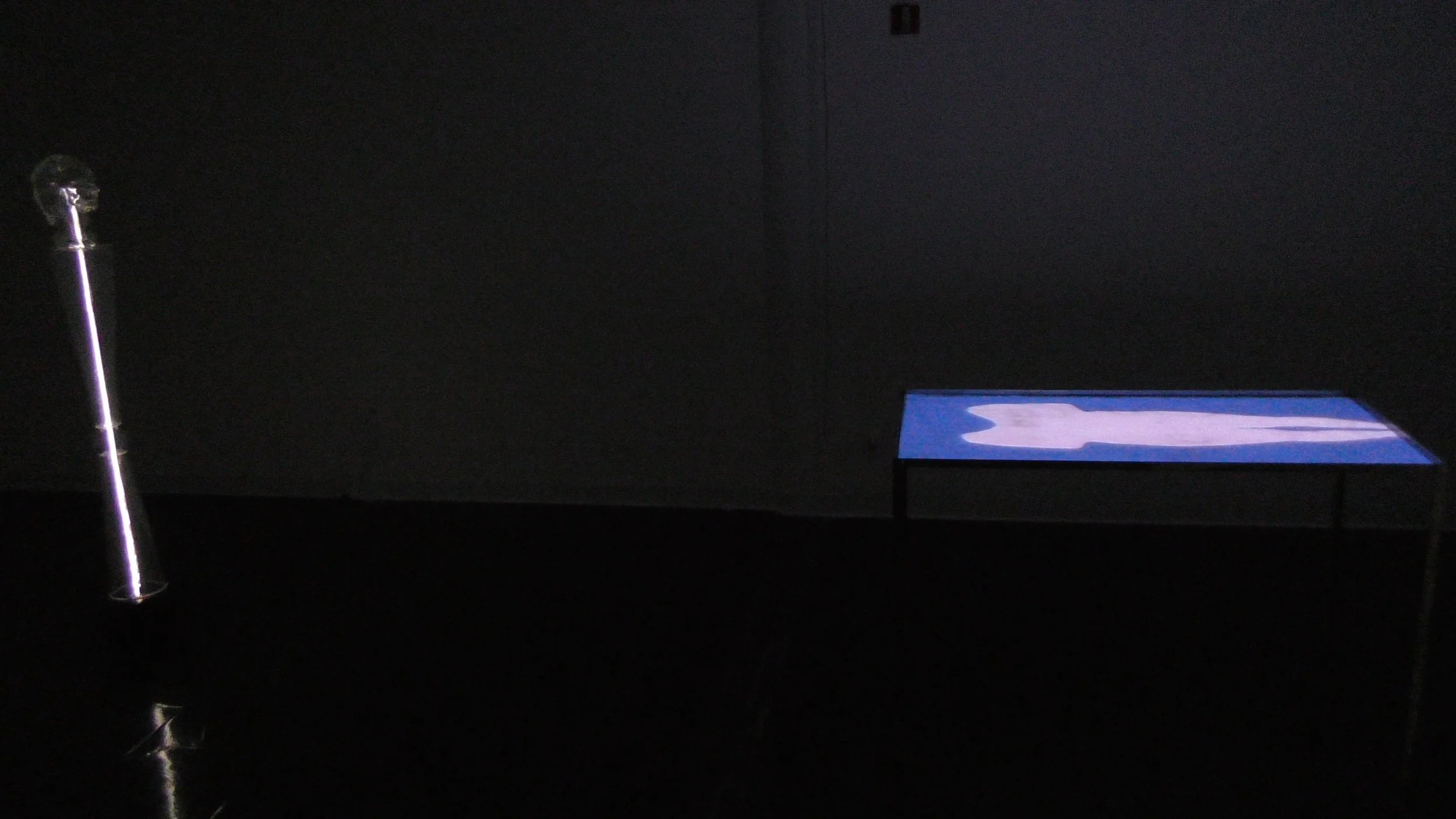
The last two pieces I have described are sister works, because they are in direct conversation with one another about the mind-body separation, also referred to as Cartesian Dualism. The piece No One is Invisible has a three dimensional head, and is placed high on a pedestal; whereas the piece Coupled Surfaces has a two dimensional body, flattened and below the head. When René Descartes claimed “cogito ergo sum” (I think, therefore I am) in the 1600’s,*
he split the self into a false duality of mind and body, while also constructing a hierarchy of mental over physical. This perspective has been perpetuated to this day, and spread across Western cultures. With the invention of digital technologies like smartphones, computers, and televisions, this mind-body separation has been even further exacerbated.
The video on the table explores my human experience of using these technologies. By not covering my head and making the silhouette headless, I aim to depict the superficiality of my body when presented on social media or other online platforms. Sometimes my mind and body feel separated while using them, as if I could operate these machines only on pure thought. Although that is not yet the case, it seems to be going in that direction pretty quickly. Utilizing advanced digital technology in daily life while still maintaining an awareness of our human body and remaining physically active is a challenge, and is also our responsibility. It is critical that we do not let our machines take away our physical strength and mobility. That is why I made two works of art to depict this diseasing separation, and it echoes my argument about the arts and sciences. Once again, we must reconsider and realign our mind and body in order to have a wholesome and authentic human existence. The self-portrait on the pedestal watches the projection of her body, and both are illuminated by the electricity in the walls of the space that surrounds them. Like the artworks, the electrical impulses in the brain can allow us to consciously recognize our bodily functions, and begin to reconnect our thinking to our physical existence.
*René Descartes, Discourse on the Method of Rightly Conducting One’s Reason and of Seeking Truth in the Sciences, (France: 1637), Part IV.




